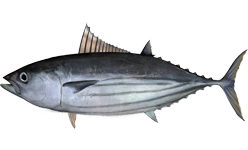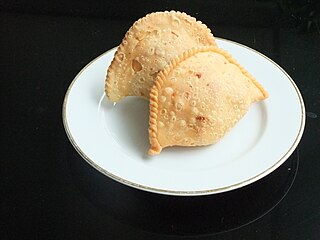
Indonesian cuisine is a collection of various regional culinary traditions that formed in the archipelagic nation of Indonesia. There are a wide variety of recipes and cuisines in part because Indonesia is composed of approximately 6,000 populated islands of the total 17,508 in the world's largest archipelago, with more than 1,300 ethnic groups.

The Minahasans or Minahassa are an indigenous ethnic group from the North Sulawesi province of Indonesia, formerly known as North Celebes. The Minahasa people sometimes refer to themselves as Manado people. Although the Minahasan pre-Christian creation myth entails some form of ethnic unification, before the nineteenth century the Minahasa region was in no way unified. Instead, a number of politically independent groups (walak) existed together, often in a permanent state of conflict.

Manado is the capital city of the Indonesian province of North Sulawesi. It is the second largest city in Sulawesi after Makassar, with the 2020 census giving a population of 451,916, and the official estimates for mid 2023 showing 458,582 inhabitants, distributed over a land area of 157.26 km2. The Manado metropolitan area had a population of 1,377,815 as of mid 2023. The city is situated on the Bay of Manado, and is surrounded by a mountainous area.

The skipjack tuna is a perciform fish in the tuna family, Scombridae, and is the only member of the genus Katsuwonus. It is also known as katsuo, arctic bonito, mushmouth, oceanic bonito, striped tuna or victor fish. It grows up to 1 m (3 ft) in length. It is a cosmopolitan pelagic fish found in tropical and warm-temperate waters. It is a very important species for fisheries.

Nasi kuning, or sometimes called nasi kunyit, is an Indonesian fragrant rice dish cooked with coconut milk and turmeric, hence the name nasi kuning.

Tinutuan, also known as bubur manado or Manadonese porridge, is a specialty of the Manado cuisine and a popular breakfast food in the city of Manado and the surrounding province of North Sulawesi, Indonesia. Tinutuan is a congee made from rice, pumpkin, and sweet potato or cassava cooked up into a pulp. It is then mixed with corn kernels and various leafy vegetables such as kangkung, kemangi, melinjo, and bayam (amaranth). Finally, it is served with many toppings that may include fried shallots, fried tofu, spring onions, leeks, coriander, chili, and condiments like sambal, dabu-dabu, and a smoked or salted fish, usually skipjack tuna, anchovies, or nike.

Minahasan cuisine or Manado cuisine is the cooking tradition of the Minahasan people of North Sulawesi, Indonesia. It is popularly known as "Manadonese cuisine" after Manado, the capital of the province, although other cities in Northern Sulawesi, such as Bitung, Tomohon and Tondano, are also known as Minahasan culinary hotspots. Manadonese cuisine is known for its rich variations in seafood, generous amount of spices, extra-hot condiments, exotic meats, and European-influenced cakes and pastries. Popular Manadonese dishes include tinutuan, cakalang fufu, cakalang noodle, paniki, chicken or various fish and seafood spiced in rica-rica or woku spices, chicken tuturuga, and brenebon.

Rica-rica is a type of Southeast Asian hot and spicy bumbu found in Minahasan cuisine and Gorontalo cuisine of Minahasa Peninsula, North Sulawesi, Indonesia.

Colo-colo is an acidic condiment commonly found in Maluku archipelago, Indonesia. It is believed to have originated in Ambon city, and accordingly is often described as Ambon's sambal. Colo-colo is similar to Manado's dabu-dabu, as they both use many chopped red chili peppers, bird's eye chili, shallots, red and green tomatoes, and a pinch of salt and sugar, mixed with fresh calamansi juice or locally known as lemon cui or jeruk kesturi. The main difference is that colo-colo recipe often includes additional ingredients, such as chopped lemon basil, kenari nut, and tahi minyak or ampas minyak, or caramelized rarobang. As a result, colo-colo is darker and more oily than dabu-dabu.

Ikan goreng is a hot dish consisting of deep fried fish or other forms of seafood. Ikan goreng literally means "fried fish" in Indonesian and Malay languages.

Sambal is an Indonesian chili sauce or paste, typically made from a mixture of a variety of chilli peppers with secondary ingredients such as shrimp paste, garlic, ginger, shallot, scallion, palm sugar, and lime juice. Sambal is an Indonesian loanword of Javanese origin. It originated from the culinary traditions of Indonesia and is also an integral part of the cuisines of Singapore, Malaysia, Brunei, and Sri Lanka. It has also spread through overseas Indonesian populations to the Netherlands and Suriname.

Ikan bakar is an Indonesian and Malay dish, prepared with charcoal-grilled fish or other forms of seafood. Ikan bakar literally means "grilled fish" in Indonesian and Malay. Ikan bakar differs from other grilled fish dishes in that it often contains flavorings like bumbu, kecap manis, sambal, and is covered in a banana leaf and cooked on a charcoal fire.

Mie cakalang is a traditional Indonesian skipjack tuna noodle soup from Manado, North Sulawesi, Indonesia. Mie means "noodle", while cakalang is Manado dialect for "skipjack tuna".

Tinorangsak or tinoransak is an Indonesian hot and spicy meat dish that uses specific bumbu found in Manado cuisine of North Sulawesi, Indonesia. The most common meat used in tinorangsak is pork. However, other kind of meat such as beef, chicken or seafood might be used as well. Spices mixture includes chili pepper, shallot or onion, ginger, lime leaves, lemongrass, lime juice, cooking oil, and salt.

Indonesian noodles are a significant aspect of Indonesian cuisine which is itself very diverse. Indonesian cuisine recognizes many types of noodles, with each region of the country often developing its own distinct recipes.

Ayam rica-rica is an Indonesian hot and spicy chicken dish. It is made up of chicken that cooked in spicy red and green chili pepper. The origin of this dish is from Minahasan cuisine of North Sulawesi.

In Indonesia, pastel refers to a type of kue filled with meat, vegetables, and rice vermicelli deep fried in vegetable oil. It is consumed as a snack and commonly sold in Indonesian traditional markets. The similar Manadonese version replaces the thin crust with bread filled with spicy cakalang and is called panada.


















